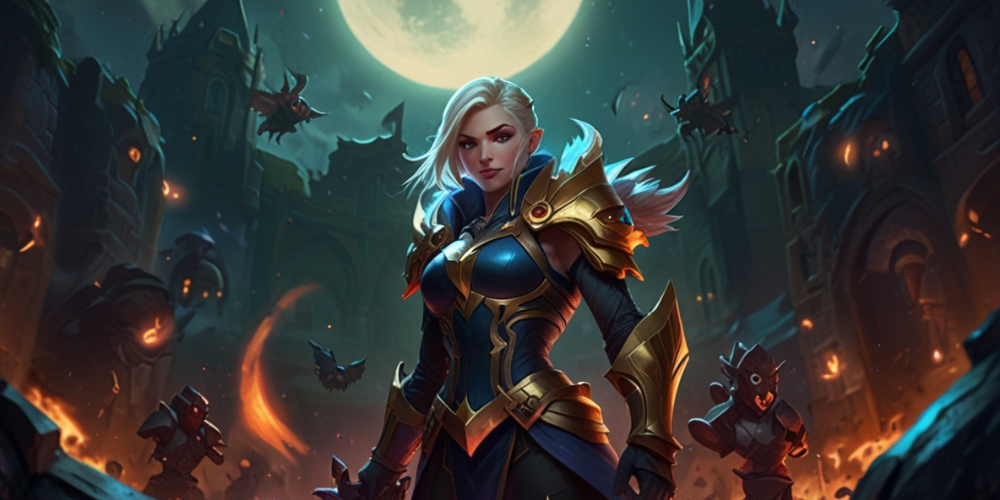Strategies for League of Legends

As I dove into the realm of League of Legends, the initial understanding of its fundamental mechanics felt crucial. In the beginning, I focused on grasping the champion roles: top laner, mid laner, jungler, ADC, and support. Knowing where and how each champion fits into the larger scheme of the game significantly influenced my gameplay. The synergy between champions is something I paid close attention to—weaving together various characters creates opportunities for more effective team strategies.
Choosing the Right Champion
When it came to champion selection, I learned the importance of choosing someone I was comfortable with while also considering the needs of my team. Each match has a different dynamic, and I realized flexibility is key. I would often consult recent patch notes to stay updated on champion buffs or nerfs, allowing me to select a champion that was not only effective but also relevant to the current meta.
Mastering Last-Hitting
One of the most critical skills I practiced relentlessly was last-hitting minions. At first, it felt frustrating to see other players racking up gold while I struggled. Over time, I learned the timings and animations of my chosen champion, which dramatically improved my ability to secure minion kills without allowing them to push to the tower. This became a cornerstone of my early game strategy, allowing me to gain an economic advantage over my lane opponent.

Map Awareness and Warding
Map awareness truly transformed my approach to gameplay. Early in my journey, I would often focus solely on my lane, but I eventually realized that information is power. I developed a habit of frequently checking the minimap for signs of enemy movement. Warding became an essential skill; placing wards in key locations helped my team avoid ganks and set up plays. I understood that communication with my team about enemy whereabouts was vital for our success.
Understanding Objectives
Grasping the significance of objectives in the game was another pivotal moment for me. I initially thought that merely securing kills was enough to win matches. Eventually, I learned that taking down towers, dragons, and barons dictated the game's flow. Focusing on objectives rather than chasing kills changed my mindset, and I began prioritizing team fights near these crucial points on the map.
Champion Synergy and Combos
In my pursuit of distinguishing between champions, I paid close attention to synergy and combos. Whether I was playing a support or damage dealer, understanding how my abilities interacted with my team's champions allowed us to execute powerful combinations. Pairing champions with crowd control effects with those who could deal follow-up damage created opportunities for advantageous trades and successful team fights.
Adapting Builds to the Game
I began experimenting with item builds, recognizing that adapting my purchase choices according to the game state became essential. Sticking to a rigid build could lead to shortcomings, especially when facing unique challenges posed by the enemy team. I learned to scout what items would provide the most benefit against the opposing champions—whether it was armor against heavy AD compositions or magic resist against AP threats.
Communication and Teamplay
Effective communication transformed the way I interacted with my teammates. I started using the ping system more proficiently, signaling when I was missing or if I spotted the enemy jungler. I made an effort to discuss strategies, call for objectives, and coordinate engages. I realized that fostering a positive and constructive team environment could often be the deciding factor in whether we succeeded or not.

Jungle Pathing and Control
As I ventured into the jungle, I discovered that understanding jungle pathing was not just an advantage but a necessity. Early game routes informed my later game presence and objectives. Each match, I tailored my path based on my champion, team composition, and enemy behavior. I was constantly analyzing how to effectively control the jungle, secure buffs, and set up for ganks that could benefit my laners.
Adapting to the Meta
Staying current and adapting to the evolving meta became vital for my growth as a player. I followed professional leagues and watched streams, gaining insight into new strategies and champion picks. I began to recognize how balance patches influenced gameplay dynamics and how I could leverage newly buffed champions or strategies in my matches.
Split-Pushing: A Tactical Approach
Experimenting with split-pushing became an enriching experience. I discovered the advantages of pressuring a lane while my team focused on objectives or team fights. I recognized how wave management played into this strategy—timing my pushes perfectly meant keeping the pressure on my opponents while staying aware of potential ganks. Making decisions about when to rotate or continue pushing became a critical part of my gameplay.
Working on Mechanics
Increasing my mechanical skill was not just about practice; it required intentionality. I dedicated time to working on my last-hitting, skill-shot accuracy, and champions’ mechanics. I played in customs to refine my combos and practice precision under pressure. The more I fine-tuned my individual abilities, the more confident I became in responding during challenging situations in matches.

Adapting My Mindset
Developing a strong mindset was essential, especially during challenging games. I acquired the skill of steering clear of tilting and concentrated on nurturing an optimistic mindset no matter the situation. Focusing on my performance rather than blaming others created a more enjoyable experience, which in turn fostered better communication and teamwork. Each game felt like an opportunity to improve, regardless of the outcome.
Watching Professional Players
One of the most insightful practices I adopted was watching professional players. Streams and tournaments not only introduced me to advanced tactics but also demonstrated the importance of decision-making. I studied their movements, communication, and itemization in various situations. This exposure was invaluable, opening my eyes to nuances I hadn't considered. I began to incorporate their strategies into my own gameplay and noticed significant improvements.
Reviewing My Matches
After each match, I carved out time for self-review. I would look back at my performance, noting decisions made during crucial moments. Whether it was a missed opportunity or a botched team fight, reflecting on my gameplay helped me identify areas needing improvement. This practice became a cornerstone of my development, allowing me to become more aware of my tendencies and work on refining my skills in future games.
Building Confidence Through Experience
As I accumulated more games and experiences, my confidence grew. The lessons I learned from both wins and losses integrated into my overall strategy, and I increasingly felt equipped to handle diverse scenarios. I realized that every match presented a valuable lesson that I could take forward, building my skillset and knowledge of the game incrementally.







